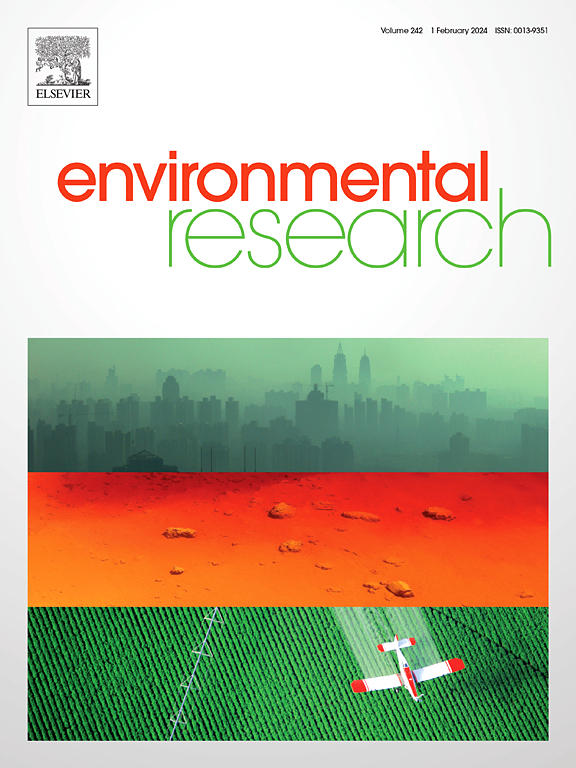端粒长度随平均血铅浓度的下降而下降。
IF 7.7
2区 环境科学与生态学
Q1 ENVIRONMENTAL SCIENCES
引用次数: 0
摘要
铅是一种广泛存在的高毒性环境污染物,可对人体组织和DNA造成严重危害。铅可能会破坏端粒,其长度和缩短速度与细胞衰老、生理状态和死亡率有关。然而,对自然系统中铅和端粒动力学的研究仍然没有定论。本研究以澳大利亚布罗肯希尔(Broken Hill)的散居麻雀(Passer domesticus)为研究对象,长期暴露于不同水平的环境铅中,以评估铅对端粒长度和端粒变化速率的影响。使用来自成年和幼年的所有数据,我们发现平均血铅浓度与捕获位点测量的端粒长度呈负相关,因此血铅浓度的标准差增加与端粒长度减少8%相关。在一系列的稳健性分析中,我们发现这种负相关关系在个体和场地水平上都存在。虽然没有统计学意义,但端粒长度与土壤铅的关系似乎与血铅的关系一致。我们的研究结果表明,虽然Pb暴露会损害自由生活的麻雀的端粒,但生物学效应相对较弱,并且仅在500只以上的样本中被确定。然而,我们的数据显示,在澳大利亚的这个城市环境中,一只人类共栖鸟正在遭受铅引起的端粒损伤。鉴于端粒缩短与寿命之间的良好关系,我们的研究强调了铅污染对城市地区生物群(包括人类)的明显风险。本文章由计算机程序翻译,如有差异,请以英文原文为准。

Telomere length declines with mean blood lead concentration in an urban passerine
Lead (Pb) is a highly toxic and widespread environmental pollutant and can severely harm body tissues as well as DNA. Pb could potentially damage telomeres, whose length and shortening rate are linked with cellular senescence, physiological state, and mortality. Yet, studies investigating Pb and telomere dynamics in natural systems remain inconclusive. In this study, we used a free-living house sparrow (Passer domesticus) population in Broken Hill, Australia, chronically exposed to varying levels of environmental Pb, to assess the effects of Pb on telomere length and telomere rate of change. Using all data from adults and juveniles, we found that mean blood Pb concentration had a negative relationship with telomere lengths measured at capture sites, such that a standard deviation increase in the concentration of blood Pb was associated with an 8 % decrease in telomere length. In a series of robustness analyses we found that this negative relationship existed at both the individual and the site levels. Although not statistically significant, the relationship between telomere length and soil Pb also appeared to be consistent with that found for blood Pb. Our results demonstrated that while exposure to Pb damages telomeres in free-living house sparrows, the biological effect is relatively weak, and is only identified with a sample size of over 500 individuals. Nevertheless, our data reveal that in this urban setting in Australia, a human commensal bird is suffering from lead-induced damage to telomeres. Given the well-established relationship between telomere shortening and life-span, our study highlights a clear risk of Pb contamination on the biota of the urban area, including humans.
求助全文
通过发布文献求助,成功后即可免费获取论文全文。
去求助
来源期刊

Environmental Research
环境科学-公共卫生、环境卫生与职业卫生
CiteScore
12.60
自引率
8.40%
发文量
2480
审稿时长
4.7 months
期刊介绍:
The Environmental Research journal presents a broad range of interdisciplinary research, focused on addressing worldwide environmental concerns and featuring innovative findings. Our publication strives to explore relevant anthropogenic issues across various environmental sectors, showcasing practical applications in real-life settings.
 求助内容:
求助内容: 应助结果提醒方式:
应助结果提醒方式:


